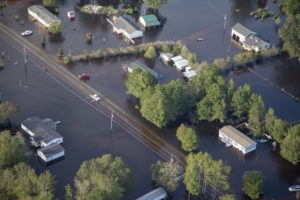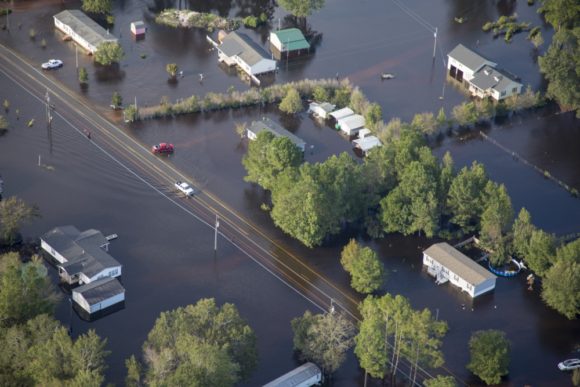After the two recent billion-dollar disasters struck the southeast this fall, the nation’s largest property/casualty insurers responded by deploying their CAT response teams to the affected areas. J.D. Power surveyed consumers affected by the storms to understand which insurance companies were most responsive and how the industry performed overall.
“When consumers enter into an agreement with an insurance company they are essentially buying a promise.” says Tom Super, director of the insurance practice at J.D. Power. “When Hurricanes such as Florence and Michael occur, it shines a light on those companies that are able to deliver on that commitment at great scale, and those that miss the mark.”

Affected home and auto policyholders who submitted a claim in the wake of the recent storms were asked to participate in this study, which was fielded from October 19-November 2, 2018. The results generated over 650 responses from individuals across four states, including: North Carolina, South Carolina, Florida and/or Georgia. Following is a summary of the study’s findings:
- 87 percent of customers said their insurer met or exceeded expectations in their hurricane response efforts.
- 30 percent of consumers gave their insurer a “perfect 10”, while only 2 percent of consumers gave them the lowest score possible.
- Among consumers that reported major damage or a total loss, 42 percent gave their insurer a “perfect 10”, while only 1 percent gave them the lowest score possible.
- 79 percent of customers reported their insurer had fully informed them of their coverage options prior to the hurricane.
- The industry response was scored slightly higher by younger customers, which may have been a reflection of their less complex insurance needs.
Performance Across Storms was Consistently Strong
- 88 percent of Hurricane Florence and 87 percent of Hurricane Michael reporting had met or exceeded expectations.
- While the results were consistent across affected areas, policyholders in South Carolina rated insurer performance slightly higher when compared to residents of Florida, who rated the industry’s response slightly lower.
- Overall, consumers reported the greatest opportunities for improvement in insurer response were in the areas of: “making sure you had the right coverage to cover your loss” (36%), “timeliness of resolving your issue/problem” (36%), and demonstrating “concern for your needs” (35%).
- Directs Outperform Agency-Led Carriers
One of the interesting findings from the study was that consumers of direct insurers reported higher satisfaction than agency-led carriers, with lower favorably reported at only 9 percent for directs compared to near 14 percent for carriers with local agents. - 64 percent of direct to consumer policyholders reported having their claim fully covered compared to
just 54 percent of agency led carriers. These results may have been impacted by direct carriers reporting a higher percentage of claims under $10,000 38 percent of claims, compared to 29 percent for agency-led carriers. Direct carriers also reported a higher percentage of auto-only claims. - 90 percent of customers reported being contacted by their Insurer to offer assistance: 63 percent of consumers were contacted by phone, 44 percent were contacted by email, 29 percent were contacted in person and 8 percent reported being contacted via text message.
- 49 percent of customers reported seeing their insurer offer noninsurance support such as food, water, shelter and/or other services.
- 62 percent of consumers reported seeing either their own insurer or another offering non-insurance assistance, while 30 percent reported not seeing any community support from insurers.
- Only 4 percent of customers reported having their claim denied. 89 percent of consumers reported their claims had been either fully or partially covered, with 5 percent reporting their claim is unresolved, 4 percent had their claim denied, and 2 percent were not sure. Among those reporting having their claim denied, 65 percent indicated their insurer did not do enough to inform them of their coverage options prior to the hurricane.
The J.D. Power Pulse Study on Insurers response to Hurricanes Florence and Michael was authored by Tom Super, director of the Property and Casualty Insurance Practice (thomas.super@jdpa.com). The survey includes responses from 650 U.S. consumers, and was fielded in October 2018.
Source: J.D. Power
Was this article valuable?
Here are more articles you may enjoy.


 ‘Dream Is in Sight:’ Chamber, Reinsurers, Insurers Urge Florida to Stay the Course
‘Dream Is in Sight:’ Chamber, Reinsurers, Insurers Urge Florida to Stay the Course  Abbott Presses Congress for Shield Over Preemie Baby Formula Litigation That Could Cost It Billions
Abbott Presses Congress for Shield Over Preemie Baby Formula Litigation That Could Cost It Billions  Truckers Who Fail English Tests Get Pulled Off Roads in Trump Crackdown
Truckers Who Fail English Tests Get Pulled Off Roads in Trump Crackdown  Thailand’s Record Floods Paralyze Key Hubs for Tech and Car Parts
Thailand’s Record Floods Paralyze Key Hubs for Tech and Car Parts 